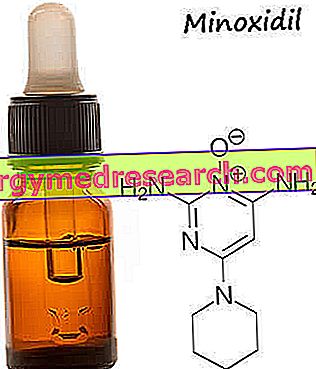What is muesli?
Muesli is a mixture of cereal flakes (especially oats), laminates, dried fruit (sultanas, apples, bananas) and oilseeds (hazelnuts, almonds).
Muesli can be prepared at home or purchased packaged.
In addition to the classic ingredients, other types of dried fruit (apricots, peaches, plums), other oil seeds (walnuts, pine nuts, etc.), other types of cereals (wheat, barley, cornflakes, etc.) or pseudocereals can be added. in flakes (eg amaranth).

Types
Packaged muesli
Packaged muesli is a mixture of crushed and dried oats (sometimes replaced or enriched with cornflakes) and other ingredients (dried fruit and oil seeds); may contain other types of rolled grains, such as wheat or rye flakes. Many varieties of muesli are available, which may contain honey, spices / flavorings or pieces of chocolate.
This type of muesli can be stored for many months and still served quickly. Alternatively, muesli can be soaked overnight in milk and then served with fresh fruit or jam the following morning.
Homemade muesli
As mentioned in the introduction, muesli can be prepared fresh using rolled and dried oats, even wholegrain, soaked in water or fruit juice / juice.
Other common ingredients for homemade granola are chopped or chopped fresh fruit (eg bananas, apples, grapes, grapes, mangoes etc.), dried fruit, oilseeds, dairy products (eg fresh milk, yoghurt, cream, condensed milk, etc.) or vegetable milk substitutes, lemon juice, other seeds (eg chia, hemp, etc.), spices (in particular cinnamon) and honey.
Original muesli
The original recipe of muesli consists of the following ingredients:
- Rolled oats: one tablespoon, previously soaked in 3 tablespoons of water for 12 hours.
- Apples, with peel (grated or chopped): two or three small or large apples.
- Oilseeds: walnuts, almonds or hazelnuts, a table spoon.
- Lemon juice: half a lemon.
- Milk cream, honey or sweetened condensed milk: 1 tablespoon.
Procedure: mix the cream, honey or condensed milk with oats and lemon juice. Mix and add the grated / chopped apple in the mixture; in this way the pulp of the apple is prevented from browning. This recipe, freshly prepared, was served immediately before any other dish in the meal.
Supply
How to use muesli?
Muesli is a typical element of breakfast, brunch and, in more energetic diets, secondary snacks of mid-morning or afternoon.
Very nutritious and fairly balanced (depending on the recipe), muesli is an ingredient to accompany liquid or semi-liquid foods that enrich its nutritional profile. The most widespread associations are with: milk, yogurt, filmjölk (or simply fil), vegetable milk, long coffee, hot chocolate, milk and cocoa, citrus juice and fruit juice.
In Switzerland and Germany, muesli is a clear evening dish called "Birchermüesli complet", or muesli with buttered bread and macchiato (with milk).
It is a common habit to add pieces of fresh fruit to the packaged muesli.
History
Birth of muesli
The muesli was conceived in the early 1900s by Maximilian Bircher-Benner, a Swiss nutritionist-physician, with the aim of preparing a healthy and complete food for use in hospital nutrition.
The muesli was inspired by a similar dish that Bircher-Benner tasted during a hike in the Swiss Alps. Initially, the doctor himself called this recipe simply "d'Spys" (in German German "the dish", from the German "die Speise").
In its modern form, muesli became popular in the West since the 1960s, thanks to the growing interest in food, health and vegetarian diets.
The "original" muesli (that of Bircher), before consumption, was previously soaked all night in water and lemon juice, and then eaten with yogurt.
Etymology
Originally known in Swiss German as "Birchermüesli" or simply "Müesli", the word has become the Alemannic diminutive "Mues" meaning "puree" or "mash-up".
Nutrition
Nutritional characteristics of muesli
Rich in fiber and "good fats", muesli owes its sweet taste to the presence of carbohydrates in raisins and in the rest of the dried (dehydrated) fruit. Oat flakes instead represent a source of complex carbohydrates, which guarantees the availability of gradual release energy.
Oilseeds, on the other hand, provide a fair amount of unsaturated fats, part of which are polyunsaturated, and proteins of medium biological value. Thanks to these interesting nutritional properties, a meal of muesli (breakfast, brunch or snack) allows you to start the day with vitality, without getting tired and hungry at lunch.
The caloric value of the food is closely related to the type of ingredients used and is, on average, between 300 and 400 calories per 100 grams. In a good muesli the fruit content must be equal to or greater than 25-30%. Finally, among the ingredients, sugar should not appear.
Curiosity
Professor Vincent Marks, author of the book "Panic Nation" (year 2006) coined the definition of "Muesli belt malnutrition" to describe the alleged phenomenon of lack of essential fats in children. This consequence would be due to the choice of exclusively "healthy" foods, which in reality prove to be exclusively "thin".
A study conducted at the University of Bristol that examined the diets of British children concluded that these fears are unmotivated or excessive. While children with a lower fat intake showed a lower intake of zinc and vitamin A, those with a higher lipid diet ingested less iron and vitamin C. Overall, no group of children was found to be deficient in substances essential nutrients, regardless of diet.
Homemade Muesli
Homemade Muesli
X Problems with video playback? Reload from YouTube Go to Video Page Go to Video Recipes Section Watch the video on youtube



